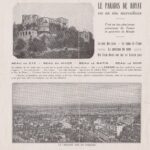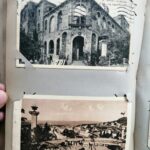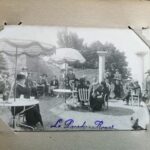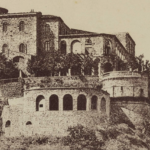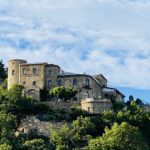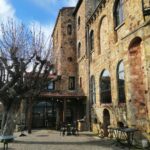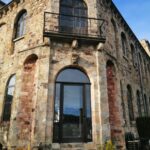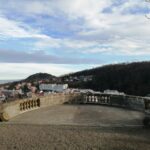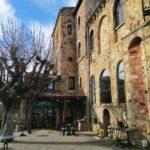Glittering hotels that rise in terraced opulence…the beautiful gardens alive with light and laughter; the opera, the theatre, evening dress, luxury . . . that also is Royat.
– Robert W. Service
With its stained-glass-windowed thermal spa, sprawling riverside park, and stately, fin-de-siècle hotels, Royat has historically been seen as one of the most luxurious towns in Auvergne. Like Montmartre in Paris, where every avenue seems to contain something of artistic interest, Royat is full of monuments that take one back to the olden days of waltzes, ballrooms, and literary salons. Yet, high on the sun-washed, rocky hills above its cityscape, one landmark stands apart from — and literally overlooks — the rest: “Le Paradis.”
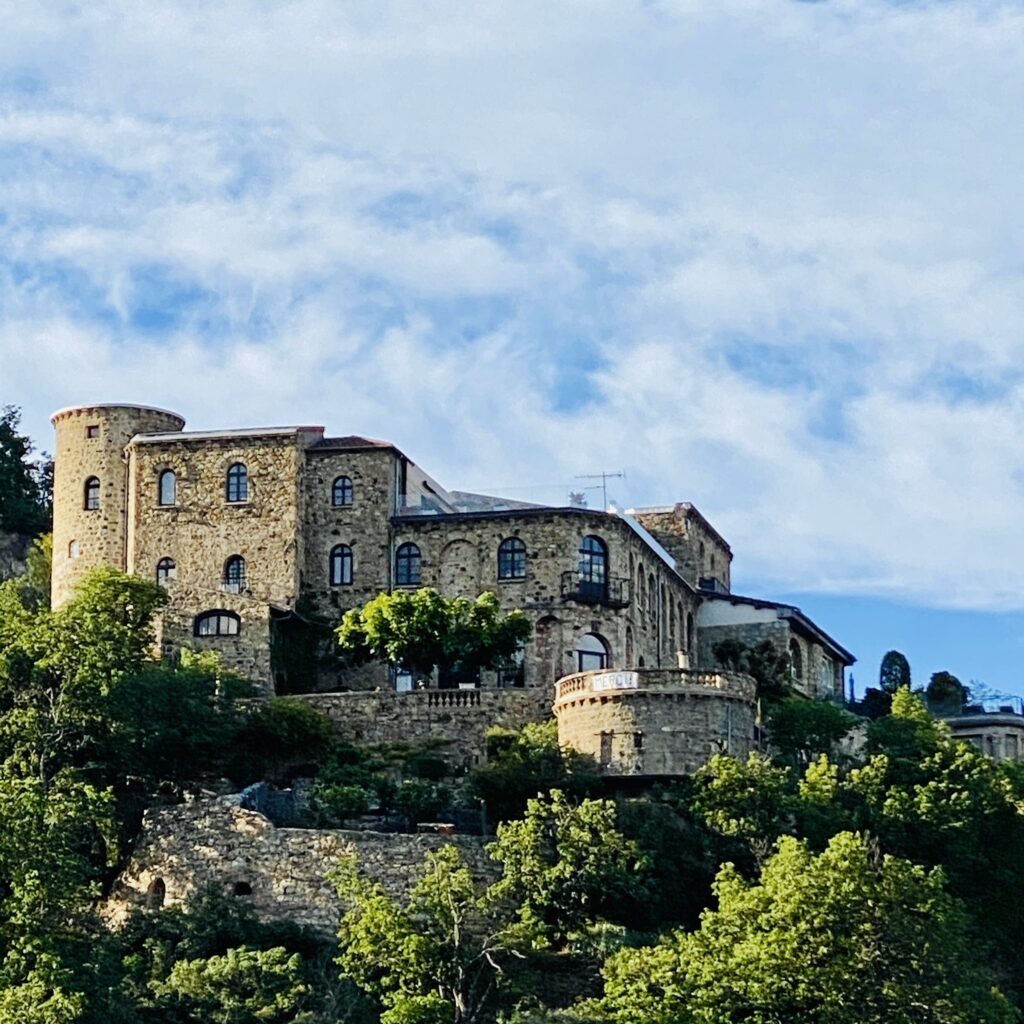



Le Paradis is unquestionably the closest thing to a Tuscan palazzo that can be found in the Clermont-Ferrand area. Its origins date back to the 1900s, when Auvergnat physician Alexandre Petit commissioned local architect Louis Jarrier to create a retreat where visitors to Royat’s renowned thermal spas could socialise and relax. Petit was an avowed antiquarian with a strong penchant for Mediterranean architecture, and his classical tastes can be seen in the mansion’s pergolas, terraces, and free-standing columns (purposefully designed to simulate ruins).

In 1964, Le Paradis was purchased by Emile Blanc, a French chef and former soldier. Blanc turned the space into a restaurant that eventually became one of the area’s most famous attractions. Blanc’s son, Alain, took over operations in the 1980s, and ran the restaurant until his retirement in 2015. After Le Paradis closed its doors, Alain’s sons — Rémi and Nico — transformed the business into Tour du Sud — a studio and artist’s residency.
The brothers, both lifelong musicians and sound engineers, wanted to create a tranquil environment that was conducive to creativity. “This building is a piece of art,” Rémi told me. “It always has been, and in a way, we are continuing the tradition of the former owner doctor Petit, who shared his artistic passions with others.”

Rémi also spoke about Tour du Sud’s ideal location. “Our artists love it because it’s between the countryside and the city. Clermont is just minutes away, but we’re are also very close to the puy de Dôme and many hiking trails.”
The brothers fundamentally see the studio as the perfect setting for experimentation. “This is a sandbox,” Rémi explained. “In the future, we’re going to experiment with different offerings, such as podcasting. Above all, we love the fact that Auvergne is not as well-known and doesn’t suffer from overtourism. At the same time, though, we would also like to attract international artists.”
In addition to providing recording services, Tour du Sud also hosts concerts every Sunday in September. These clifftop events, which hearken back to the lively soirées that took place at Le Paradis during the interwar period, should absolutely not be missed.





